Error: Could Not Find Any Python Installation To Use
If you are encountering the error message “Error: Could not find any Python installation to use”, it means that your system is unable to locate a Python installation to execute the desired script or command. This error can be quite frustrating, especially for those who heavily rely on Python for their development work. However, there are several common causes for this error and troubleshooting steps that can help you resolve it.
1. Understanding the “Error: Could not find any Python installation to use”
This error occurs when the Python interpreter is not found in your system’s PATH environment variable. The PATH variable contains a list of directories that the operating system searches in order to locate executable files. If Python is not listed in the PATH variable, your system will be unable to locate it and hence, the error message will be displayed.
2. Common causes for the error message
a) Python is not set from the command line or npm configuration: One possible cause is that Python is not correctly configured in the command line or npm (Node Package Manager) configuration. This can happen if the necessary paths to the Python executable are not specified or if the configuration files have been modified.
b) Docker gyp err find python: If you are using Docker for your development environment, the error may occur due to missing or improperly configured Python within the Docker container.
c) Node-gyp error: Node-gyp is a tool used for compiling native add-ons for Node.js. If you encounter this error while using node-gyp, it could indicate a problem with the Python installation or configuration within the Node.js environment.
d) Python is not set from the environment variable: If the environment variable for Python is not set or is pointing to the wrong location, the error message can appear. This can happen when the Python executable has been moved or if the PATH variable is not correctly configured.
e) Msvs_version not set from the command line or npm configerror: could not find any python installation to use: This error message is specific to Windows systems and typically occurs when the MSVS (Microsoft Visual Studio) version is not correctly set in the command line or npm configuration.
3. Troubleshooting steps for resolving the issue
a) Checking the Python installation and environment variables: Start by verifying that Python is installed correctly on your system. Open a terminal or command prompt and type “python” to see if the Python interpreter is recognized. If it is not found, you need to reinstall Python and ensure that it is added to the PATH environment variable. Additionally, check the configuration files (e.g., .bashrc, .bash_profile, .npmrc) and make sure they contain the correct paths to the Python executable.
b) Reinstalling Python and configuring the environment: If the Python installation is found to be missing or corrupted, reinstall Python from the official Python website. During the installation process, ensure that the option to add Python to the PATH variable is selected. After reinstalling, verify that Python is recognized from the command line by typing “python” again. If the issue persists, consider checking and modifying the PATH variable manually.
c) Using alternative methods to run Python scripts: If you are still facing the error, you can try running your Python scripts using alternative methods. For example, you can use an integrated development environment (IDE) like PyCharm or Anaconda, which have their own Python installations and handle the configuration internally. Alternatively, you can try running your Python scripts within a virtual environment, such as virtualenv or conda, where the Python environment is isolated and can be managed separately.
d) Seeking further assistance and resources for troubleshooting the error: If the troubleshooting steps mentioned above do not resolve the issue, it is advisable to seek further assistance from the Python community or forums. You can post your specific problem on platforms like Stack Overflow or GitHub, providing details about your system setup, error messages, and steps you have already taken. Additionally, refer to official documentation, tutorials, or online resources that provide troubleshooting guides for specific scenarios related to Docker, npm, or MSVS.
FAQs:
Q1. How can I check if Python is installed correctly on my system?
A1. Open a terminal or command prompt and type “python”. If the Python interpreter is recognized and displays the version information, Python is installed correctly. If the command is not found or an error message is displayed, you may need to reinstall Python.
Q2. Can I modify the PATH variable manually?
A2. Yes, you can modify the PATH variable manually by adding the path to the Python executable. This can be done through the system settings or by modifying the appropriate configuration files based on your operating system.
Q3. What should I do if reinstalling Python does not resolve the issue?
A3. If reinstalling Python does not solve the problem, you can try using alternative methods to run your Python scripts, such as using an IDE or setting up a virtual environment. Additionally, seeking assistance from the Python community or referring to online resources can provide further guidance.
Q4. Will reinstalling Python delete my existing Python packages and libraries?
A4. Reinstalling Python itself will not affect your existing packages and libraries. However, it is recommended to back up your project files and any critical data before proceeding with the reinstallation process.
Q5. What are some common mistakes that can lead to this error?
A5. Some common mistakes include not selecting the option to add Python to the PATH variable during the installation process, modifying the configuration files incorrectly, or moving the Python executable to a different location without updating the relevant paths.
In conclusion, encountering the error “Could not find any Python installation to use” can be frustrating, but with proper troubleshooting steps and understanding of common causes, you can quickly resolve the issue. It is essential to check the Python installation, ensure correct configuration of environment variables, and consider alternative methods of running Python scripts if needed. Seeking assistance from the Python community and referring to documentation and online resources can also be valuable in troubleshooting this error.
How To Fix Python Was Not Found Run Without Arguments To Install From The Microsoft Store Error
Keywords searched by users: error: could not find any python installation to use Could not find any Python installation to use, Python is not set from command line or npm configuration, Could not find any Visual Studio installation to use, Docker gyp err find python, Node-gyp error, Python is not set from environment variable python, Docker nodejs GitHub, Msvs_version not set from command line or npm config
Categories: Top 22 Error: Could Not Find Any Python Installation To Use
See more here: nhanvietluanvan.com
Could Not Find Any Python Installation To Use
Python is a versatile and powerful programming language that is used for a wide range of applications, from web development to data analysis and artificial intelligence. However, when trying to run Python code or programs, it is not uncommon to encounter the error message “Could not find any Python installation to use.” This error usually arises when the system cannot locate a Python installation or when there are issues with the Python installation itself. In this article, we will explore the possible causes of this error and discuss various solutions to resolve it.
Possible Causes of the Error
1. Python not installed: One of the most apparent causes of this error is the absence of a Python installation on the system. Python needs to be installed on your computer to execute Python code. You can easily download and install Python by visiting the official Python website (python.org) and following the installation instructions specific to your operating system.
2. Incorrect Python path: In some cases, Python might be installed on the system, but the path to the Python executable may not be properly set. The path is a variable that tells the operating system where to find the Python installation. If the path is not correctly configured, the system may not be able to locate Python. You can set the path manually through the system’s environment variables or use third-party tools to automate the process.
3. Multiple Python installations: Another reason for this error can be the presence of multiple Python installations on the system. If you have multiple versions of Python installed, it is essential to ensure that the correct version is being referenced when executing Python code. Specifying the correct Python version in your code or modifying the system’s path can help resolve this issue.
Solutions to the Error
1. Install Python: If you do not have Python installed on your system, download the appropriate version from the Python website and follow the installation instructions. It is recommended to download the latest stable version to ensure compatibility with the widely used libraries and frameworks.
2. Check Python path: To verify if the Python path is correctly set, open the command prompt or terminal and type “python –version.” If Python is correctly installed and the path is correctly configured, the installed Python version will be displayed. If the command is not recognized, it means that the path is not set correctly. In this case, you can adjust the path manually or consider using an IDE that provides built-in tools for managing paths.
3. Uninstall conflicting Python versions: If you have multiple Python versions installed on your system, it is advisable to uninstall unwanted versions to avoid conflicts. This can be done through the operating system’s software management tools, such as the Control Panel on Windows or the package manager on Linux and macOS.
4. Use a virtual environment: Virtual environments allow you to create isolated Python environments, each with its dependencies and Python version. By using virtual environments, you can ensure that your code executes in the correct Python environment. Tools like virtualenv or Anaconda can be utilized to create and manage virtual environments efficiently.
5. Use an integrated development environment (IDE): IDEs like PyCharm, Visual Studio Code, and Anaconda provide a user-friendly interface to manage Python installations and environments. They often have built-in tools for choosing the correct Python interpreter, managing paths, and creating virtual environments. Using an IDE can simplify the process of resolving the “could not find any Python installation to use” error.
FAQs
Q1. Can I use Python without installing it on my system?
A1. No, Python needs to be installed on your system to execute Python code.
Q2. How can I check if Python is installed correctly?
A2. Open the command prompt or terminal and type “python –version.” If the installed Python version is displayed, it means Python is installed correctly.
Q3. How can I set the Python path manually?
A3. The process varies based on the operating system. For example, on Windows, you can modify the system’s environment variables to add Python’s installation path.
Q4. I have multiple Python versions installed. How do I choose the correct one?
A4. Specify the desired Python version in your code or modify the system’s path to reference the correct Python installation.
Q5. What benefits do virtual environments offer?
A5. Virtual environments allow you to create isolated Python environments, ensuring that your code runs consistently across different systems and avoids conflicts with other Python installations.
In conclusion, encountering the “Could not find any Python installation to use” error can be frustrating, but it is solvable. By ensuring Python is correctly installed, setting the path correctly, uninstalling conflicting versions, using virtual environments, or employing an IDE, you can resolve this issue and enjoy the full capabilities of Python for your programming needs.
Python Is Not Set From Command Line Or Npm Configuration
Python is an incredibly versatile and popular programming language used for a wide range of applications. Due to its extensive libraries, ease of use, and open-source nature, Python has gained popularity among developers worldwide. However, sometimes users encounter issues when trying to set up Python from the command line or npm configuration. In this article, we will explore these issues in-depth, troubleshoot potential solutions, and address frequently asked questions.
Setting up Python can be a straightforward process, but occasionally, users encounter the dreaded “Python is not recognized as an internal or external command” error message when trying to execute Python commands from the command line. This error occurs when the command prompt or terminal does not recognize the Python executable path. Similarly, npm configuration may also encounter challenges in finding and utilizing the correct Python version.
There can be several reasons why Python is not recognized from the command line or npm configuration:
1. Incorrect Python installation: The Python executable is not correctly installed or added to the system’s PATH environment variable. The PATH variable allows the operating system to locate executables without having to provide the entire file path every time.
2. Missing or outdated environmental variables: The system might lack the necessary environmental variables, such as PYTHONHOME or PYTHONPATH, which define the location of the Python installation.
3. Incorrect Python installation location: If Python is installed in a non-standard location, the command line or npm configuration may not be able to find it unless the proper path is set.
Now, let’s dive into some potential solutions:
1. Verify Python installation: Begin troubleshooting by confirming that Python is indeed installed on your system. Open the command prompt or terminal and type python –version. If you receive an error or see “python is not recognized,” it means Python is not installed or not added to the PATH. Install Python or update the PATH accordingly.
2. Add Python to PATH: If Python is installed but not recognized, you can manually add it to the PATH variable. In Windows, navigate to “Control Panel” -> “System” -> “Advanced system settings” -> “Environment Variables.” Edit the “Path” variable, adding the path to the Python executable (e.g., C:\PythonXX\). Ensure that you restart the command prompt or terminal after making any changes.
3. Reinstall Python: If the issue persists, consider reinstalling Python altogether. While reinstalling, pay close attention to any prompts related to adding Python to the PATH or modifying environmental variables. Choosing the appropriate options during installation can resolve the problem.
4. Configure npm: If you are encountering the issue while configuring npm, execute the following command: npm config set python
5. Verify environmental variables: Confirm that the necessary environmental variables are correctly set. PYTHONHOME should point to the Python installation directory, and PYTHONPATH should include the directories where Python libraries are installed. Adjust or add these variables if necessary.
Frequently Asked Questions:
Q1: Why is Python not recognized from the command line?
A1: Python may not be recognized due to a missing or incorrect PATH environment variable. Adding the correct path to the Python executable resolves this issue.
Q2: How do I add Python to the PATH variable?
A2: In the Windows Control Panel, under “System” and “Environment Variables,” edit the “Path” variable to include the path to the Python executable.
Q3: Why can’t npm find the correct Python version?
A3: To configure npm correctly, set the path to your Python executable using the command: npm config set python
Q4: What are environmental variables?
A4: Environmental variables are system-specific values that define the behavior of processes running on an operating system. PYTHONHOME and PYTHONPATH are examples of environmental variables related to Python.
Q5: Do I need to reinstall Python if it is not recognized?
A5: Reinstalling Python can often resolve the issue if Python is not recognized. Make sure to choose the options during installation that modify the PATH and add the appropriate environmental variables.
In conclusion, the “Python is not recognized” error from the command line or npm configuration can be caused by multiple factors. By following the troubleshooting steps provided above, you can effectively resolve these issues and get Python set up correctly. Remember to verify your Python installation, modify PATH variables, and configure npm settings as required. Happy coding!
Could Not Find Any Visual Studio Installation To Use
Visual Studio is a powerful integrated development environment (IDE) created by Microsoft for building a wide range of applications. It offers a range of tools and features that enable developers to write, debug, and deploy their code efficiently. However, sometimes users may encounter a frustrating error message saying, “Could not find any Visual Studio installation to use.” This error can occur due to various reasons, and in this article, we will explore the possible causes and provide solutions to address this issue.
Why Does This Error Occur?
The “Could not find any Visual Studio installation to use” error can occur due to several reasons. Here are a few possible scenarios:
1. Missing or Corrupted Files: Sometimes, certain installation files required for Visual Studio may be missing or corrupted. This can happen due to incomplete installations, issues during updates, or errors during system operations.
2. Incorrect or Conflicting Registry Entries: The Windows registry houses critical information about installed applications, including Visual Studio. If the registry contains incorrect or conflicting entries related to Visual Studio, it can cause the error.
3. Multiple Versions of Visual Studio: If you have multiple versions of Visual Studio installed on your system, it’s possible that the error is caused by conflicts between different installations. This can occur when the default version is not recognized or assigned correctly.
Now, let’s delve into some possible solutions to address this error:
Solution 1: Repair Visual Studio Installation
If you encounter the error, the first step is to attempt a repair of your Visual Studio installation. Follow these steps:
1. Open the Control Panel on your PC and navigate to “Programs” or “Programs and Features.”
2. Locate the entry for Visual Studio and right-click on it.
3. Select the “Change” or “Repair” option from the context menu.
4. Follow the on-screen prompts and instructions to proceed with the repair process.
5. Once the repair is complete, restart your computer and check if the error persists.
Solution 2: Reinstall Visual Studio
If the repair process doesn’t resolve the issue, you might consider reinstalling Visual Studio. Follow these steps:
1. Uninstall the currently installed version of Visual Studio by following the steps outlined in Solution 1.
2. Download the latest version of Visual Studio from the official Microsoft website.
3. Run the installer and follow the prompts to reinstall Visual Studio.
4. Restart your computer after the installation is complete and check if the error is resolved.
Solution 3: Clean Up Visual Studio Remnants
If the error remains unresolved even after reinstallation, there might be remnants of a previous installation causing conflicts. In such cases, a clean-up might be necessary:
1. Uninstall Visual Studio using the uninstallation steps mentioned in Solution 1.
2. Download and run the “Visual Studio Uninstaller” tool provided by Microsoft from their official website.
3. Follow the instructions to remove any leftover files and registry entries related to Visual Studio.
4. Restart your computer and proceed to reinstall Visual Studio using the steps mentioned in Solution 2.
FAQs:
Q1. Can I have multiple versions of Visual Studio installed on my computer?
A1. Yes, you can have multiple versions of Visual Studio installed on your computer. However, conflicts might arise if they are not properly recognized or assigned. Ensure that you have the correct default version selected or consider uninstalling conflicting versions.
Q2. How do I check which versions of Visual Studio are installed on my computer?
A2. To check the installed versions of Visual Studio on your computer, you can use the Visual Studio Installer. Open it from the Start Menu and navigate to the “Installed” tab. Here, you can view all the installed versions and manage them accordingly.
Q3. Will reinstalling Visual Studio affect my projects or settings?
A3. Reinstalling Visual Studio shouldn’t affect your projects or settings, as they are usually stored separately from the installation files. However, it is always recommended to create backups of important projects and settings before performing any major installations or changes.
Q4. What should I do if none of the solutions mentioned above work?
A4. If none of the solutions provided in this article resolve the issue, it is advisable to contact Microsoft Support or seek assistance from the Visual Studio community forums. They can provide you with more specific guidance or troubleshooting steps tailored to your situation.
In conclusion, the “Could not find any Visual Studio installation to use” error can be frustrating, but there are several solutions to resolve it. By following the steps mentioned above, you can repair, reinstall, or clean up your Visual Studio installation, enabling you to get back to coding without any hindrances.
Images related to the topic error: could not find any python installation to use
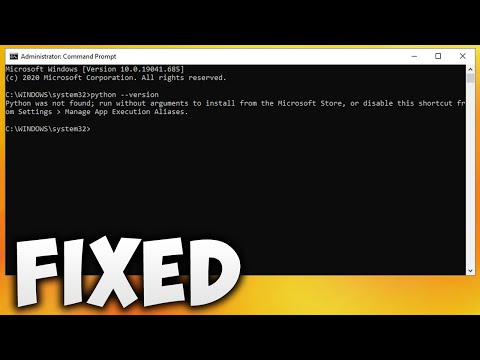
Found 39 images related to error: could not find any python installation to use theme
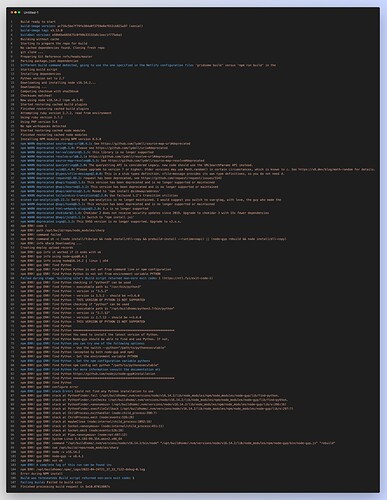
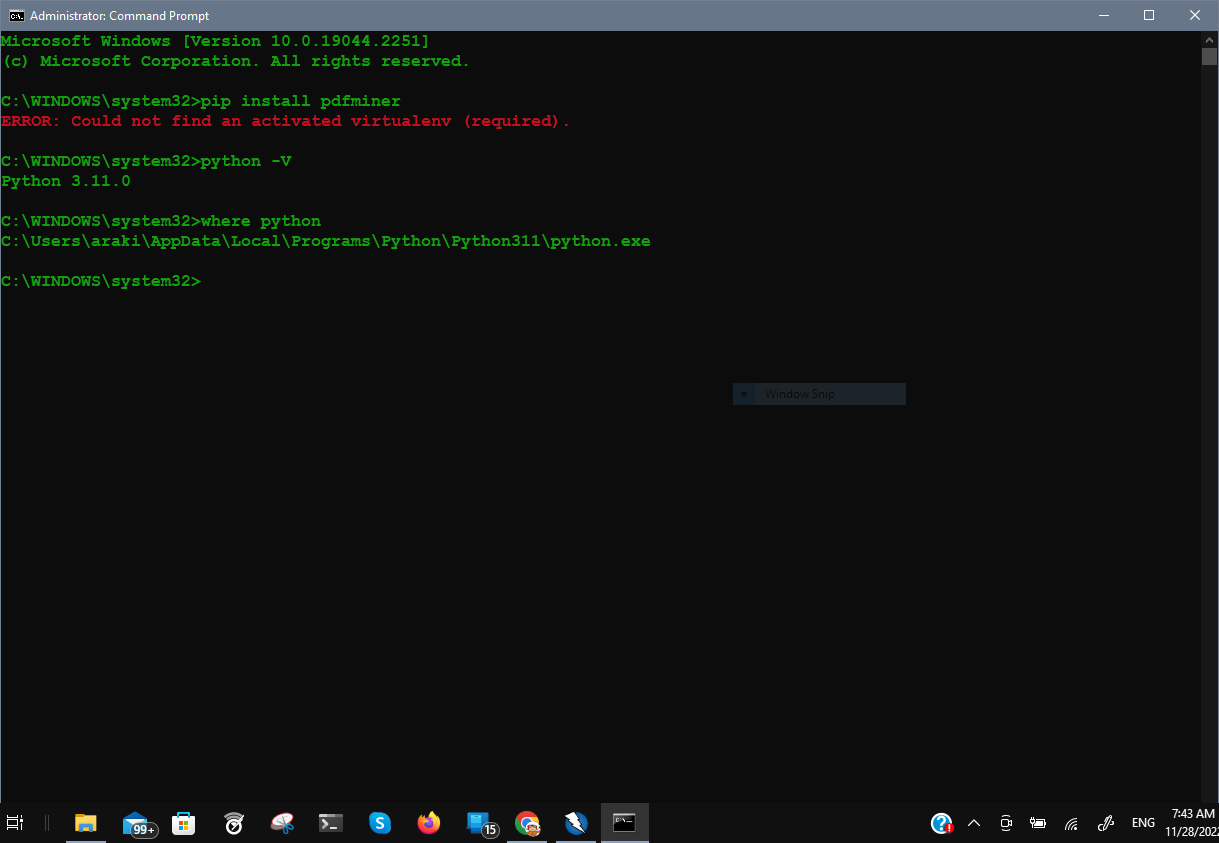
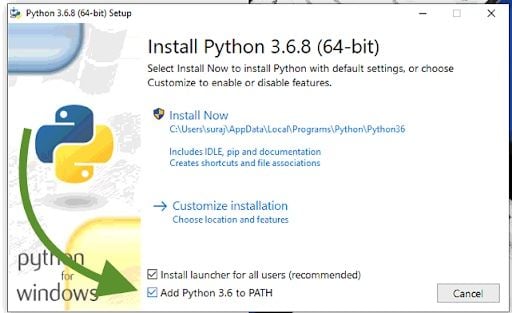
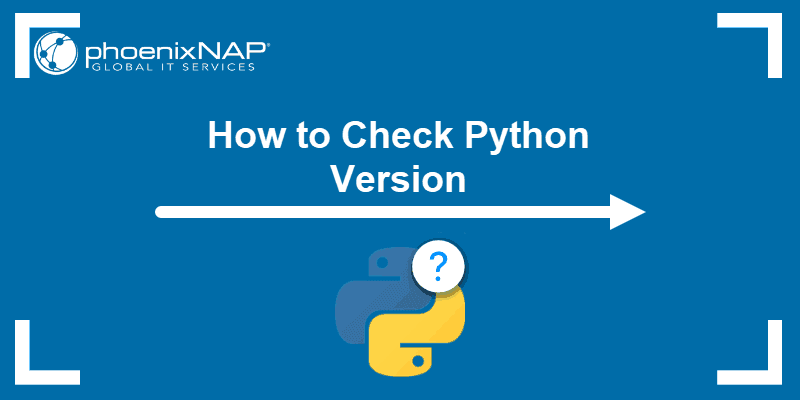
Article link: error: could not find any python installation to use.
Learn more about the topic error: could not find any python installation to use.
- node.js – How to solve “Could not find any Python installation …
- Gyp ERR! stack Error: Could not find any Python installation to …
- How to solve “Could not find any Python installation to use …
- Nodejs deployments failing with “gyp ERR! find Python”
See more: nhanvietluanvan.com/luat-hoc